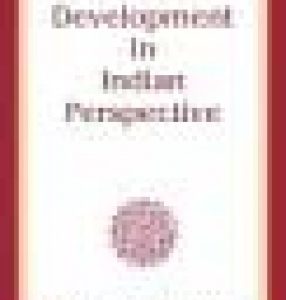This volume is collection of eight lectures delivered by Dr Kapila Vatsyayan on different occasions, some in the memory of four eminent persons such as Ancharlott Eschmann, an art historian; Dr C.D. Deshmukh, founder of the India International Centre and former Chairman, University Grants Commission; Prof. Birendra Kumar Bhattacharyya, eminent writer social worker and former president of the Sahitya Akademi and Dr D.S. Kothari, the doyen of science and a dedicated Gandhian, and the remaining four on a few critical issues related to culture.
These lectures delve upon crucial terms and topics like shastra and prayoga, and marga and desi in the study of Indian arts, other social systems and the sociology of religion; interface of culture and development; role of arts in social transformation; a modern rishi, the eco-cultural cartography of South Asia; the oral and written systems of knowledge transmission; the different aspects of India’s cultural heritage and identity; and Hinduism as a religion of divine immanence, where concepts like purusharthas and varnashrama-dharma are all part and parcel of the all-encompassing Sanatana Dharma.
This book thus enables readers to enlarge and nurture India’s cultural heritage and its allied features. In a fast-changing world, one should know his cultural past and thereby prepare himself to absorb what is needed, without losing his identity and existence.
ABOUT THE AUTHOR Kapila Vatsyayan
Kapila Vatsyayan artist and art historian is internationally acknowledged as the pioneer of evolving alternate models of research for establishing inter and intra-relationship of different domains of knowledge and creativity. Her own work moves from a deep understanding of the primary textual sources of the East and West, principally Sanskrit and English, and a direct experience of the arts as performer. It focuses attention on the inter relationship of the concept and creative interpretation in architecture, sculpture, painting, music, and dance. The kinetic image enables her to delve deeper into the textual and oral sources and the fundamental metaphysics which govern form and structure of the arts. She has convincingly drawn attention to the sacred geometry which pervades all the Indian arts. As visualiser of the conceptual plan of the Indira Gandhi National Centre for the Arts, she leaps across many disciplines, questions the conventional boundaries and finally establishes several bridges of communication between traditional thought and modern science. This has resulted in many multi-disciplinary studies of space and time, nature and culture, man and society, chaos and order. Her holistic integral vision is explicit in the volumes she has edited on these subjects. Her first work, Classical Indian Dance in Literature and the Arts, is a milestone by experts the world over. This work was followed by many others including the definitive study of Dance in Indian Painting, The Theoretical Basis of Asian Aesthetic Traditions; Traditional Indian Theatre: Multiple Streams; six volumes on Gita Govinda; Bharata and the Natyasastra; and the Square and the Circle of the Indian Arts. She has edited the volumes on Concepts of Space: Ancient and Modern and Concepts of Time: Ancient and Modern published by the Indira Gandhi National Centre for the Arts, New Delhi.








There are no reviews yet.